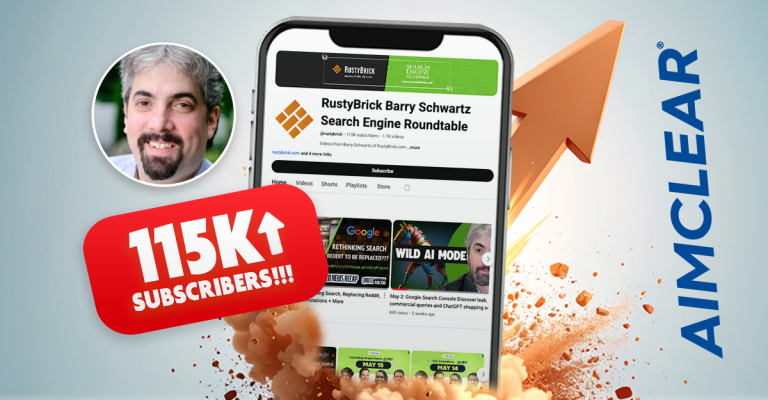
We encounter companies spending obscene amounts of Internet marketing cash on unfocused local television and newspaper website banner ads, relying on semi-useless statistics and without building in the campaign’s ability to calculate return on investment.
We live in an age where ROI conversion tracking has been the norm for years at true Internet focused advertising agencies. This article is intended as a client-side resource for any business seeking greater insight regarding the value of the these and other online advertising expenditures.
Ironically, general or lightly targeted direct-purchase banner rotation is sometimes not the most targeted method to catch the eyeballs of local media outlet website visitors. Many of these sites are also affiliate advertisers for major engines, like “Ads by Google,” which brings site owners needed extra cash.
Whereas we typically see 1% or less click through rates from general banner rotation on local media sites, enlightened use of Google’s placement-targeted ad groups can get your ad on the same site with more focused targeting options. Placement-targeted ad groups make it possible to position ads on specific pages within a site or subsections of pages.
Your local newspaper probably offers direct sales of banner ads that appear site-wide, rotate or display in only in certain sections, like sports or financial. However using Google tools, if the site’s an AdSense publisher, it’s possible to narrow placement and associated costs to display your ad only on highly specific articles, topically related to the product or services you’re selling.
For instance a newspaper’s archived article about woman’ health and cancer prevention can be leveraged to advertise the local fitness Center catering to woman or whole foods coop. We’ve seen as much as double digit CTR and 10+ percent on-page conversion at a lower cost than general or lightly targeted banner rotation.
Flying Blind
Though the the technology is widespread and inexpensive, it might not be in the local newspaper or TV station’s best interest to offer tools to track banner advertising ROI to naive advertisers. Sometimes ads, expensive by CPM or click through standards, have minimal value. These direct advertising sales are often based on venerable local advertising agency / media salesperson relationships, artifacts from an era where “brick” media channels were literally the only game in town.
Web advertising expenditures without conversion tracking are particularly pervasive in local markets, where regional advertising agencies have “evolved” their traditional media buyer chair to “online” from broadcast, print, outdoor poster, radio and other brick channels. The problem is compounded as channels like newspapers and local TV scramble to survive, in light of diminishing value to advertisers as compared to major Internet ad platforms.
Buyer Beware
Just because a 30 second spot on the 6PM news used to work does not mean that coughing up big bucks for banner advertising on the station’s website will be valuable, even if the ad generates traffic to your site.
Ask your advertising agency, television station or newspaper banner ad salesperson to prove that bundling online (to justify huge offline costs actually works…past clicks and cost.
When buying expensive banner packages it’s critical to dial in “conversion tracking,” which simply means modern web analytics capable of calculating absolute return on investment for every dime spent. Conversion tracking technology can be installed on nearly any website which has defined a goal, which might include lead generation, sales, downloads or pages touched. Proving ROI should be the guts of any online marketing campaign, regardless of the channel. Sophisticated agencies have been doing it for years.
Expect More
These days media buy agents can directly measure dollar-per-dollar cash results of online expenditures. Agency clients should demand it. This applies to banner ad purchases, PPC campaigns, link buying (gasp) or any Internet media buy. These are dangerous and expensive times in search marketing. In not staying current, you could be seriously overestimating the value of purchased traffic or even endangering the well being of your site in Google’s eyes.
Measuring Clicks Is Not Enough
Without iron clad conversion tracking, it’s possible to waste a significant percentage of your precious marketing budget–especially ill-advised in this difficult economy. We’ve found the metric (statistic) most often provided to clients by local media outlet site traffic-sellers (sometimes to justify heinous prices) is CTR, which stands for click through ratio. Measuring clicks is not enough.
It’s true, clicks are cool because they embody traffic to client’s site. However, clicks mean nothing in light of the real questions at hand: How many of the clicks become customers (conversion rate)? How much money do you pocket for each customer in relation to the media purchase expense (ROI)? Which media buy expenditures, resulting in traffic, yield little conversion (waste)?
These are much more salient measures than CTR. It may be better to have fewer more focused visitors, costing less and converting at a higher rate.
Don’t Try This At Home
We can vouch for the fact that it’s challenging to reliably deliver pay per click services to sharpen the ROI of online media buys, even for consummate PPC professionals. Keeping up on behalf of clients can mean a big training investment, attending a dozen industry conferences each year, reading for hours every week, interacting with industry peers, years of field experience and tons (I mean TONS) of testing.
It is possible that paid local media media outlet website ads deliver value to your business and the channels you’re buying actually do belong in the marketing mix. However, it’s just as likely that your wasting at least some cash. It’s probable that other channels are available which offer less expensive pockets of ROI. Hiring a professional to test is a relatively inexpensive investment in light of advertising costs these days.
Buying Media Is Forever Changed
Times have changed for media buyers. In previous generations, agency savvy was all about little black books, purchasing billboards, radio, print-verticals (like yellow pages, real estate guides and ballet programs) and negotiating rates for commercials on the local evening news.
We had to guess the potential ROI by reading Nielsen reports and listening to pitches from newspaper salespeople. Their bosses invited us on annual golf outings and splat ball parties designed to shake free commitments for client dollars amongst the bloody Mary’s.
It was more about relationships then, less about verifiable ROI and very difficult to measure success past blunt looks at weekly sales. Technology was not sufficient to actually measure return on many advertising investments. The 15% markup on media placements was easy cash for agencies, specializing in identification of demographic segments watching Seinfeld and reading the sports section.
Times have sure changed. Incredible precision is now possible to measure ROI. Don’t get me wrong. It’s still about relationships and trust between media buyer, channel sellers and client–but advertisers can now have reasonable expectations of ROI tracking on a much more serious level.
In the last 6 weeks we’ve met Minnesota advertising agencies handling online spends, totaling double-digit millions which made us choke. It seems to be especially gross in traditional tourism, automobile, and academic lead generation verticals. The lame statistic used (over and over) to prove the value of the media buys to advertisers: you guessed it…click through ratio.
As an advertiser, it’s foolish to accept such arcane metrics. Very occasionally traffic itself is an acceptable measure…very occasionally.
Shared Background
I can personally relate. My last “old-school” media job was in 1997, as the Creative Director of the Duluth, Minnesota CBS affiliate broadcast television station, KDLH. After helping deploy their first web presence, ahead of it’s time, my career evolved to founding and directing the interactive division of a venerable Duluth advertising agency, now Westmoreland-Flint, Duluth.
We sold clients lots of clicks then and I think fondly on those years. Clicks were all we had to sell. Then with the advent of early paid search (revolutionary advertising platforms like Alta Vista and Overture) I got deep into “search” and AIMCLEAR was the result. At first we had to build out own conversion tracking web analytics. Now commercial products are readily available.
Not Your Mother’s Internet
We’re struck by the pervasive nature of old-school media buy models in third and even second tier markets. Clients should demand conversion tracking for any online media buy. This is especially true when placing banners on local newspaper and television sites who are now in the business of leveraging the supposed bundled value of clicks to sell print ads and television commercials. Sadly, while the revenue props up their dwindling enterprises, without testing there is no guarantee that that the clicks yield fruit.
While these types of banner ads may serve some useful function as part of the marketing mix, they are more often poorly targeted compared to other options. Your goals may be better served by purchasing geo-targeted PPC in other channels like Google, Yahoo & MSN. The only way to know is to test by way of conversion tracking.








